The Paint Works remediation effort continues in Gibbsboro, with two more buildings coming down and a large wooded area cleared, all to remove contaminated soil and then replace it with clean fill… and then restore the properties to their natural state.
This is all part of a much larger clean up effort being done by Sherwin Williams Company’s environmental contractors, under the oversight of the EPA and NJDEP.
The property, which was added to the EPA Superfund National Priorities List in 2008, is addressing contamination issues at multiple sites (including some residential) related to the 125 years of industrial paint manufacturer in Gibbsboro.
Impacted streams and lakes in the Hilliard Creek Floodplain are also part of the remediation process.
The reason behind these efforts is that for 125 years (into the 1970s) the namesake “Lucas Paint Works” operations of Sherman Williams and their Lucas Paints Company, polluted the grounds and waterways with paint and chemicals in multiple areas in and surrounding the complex, which then also polluted several waterways.
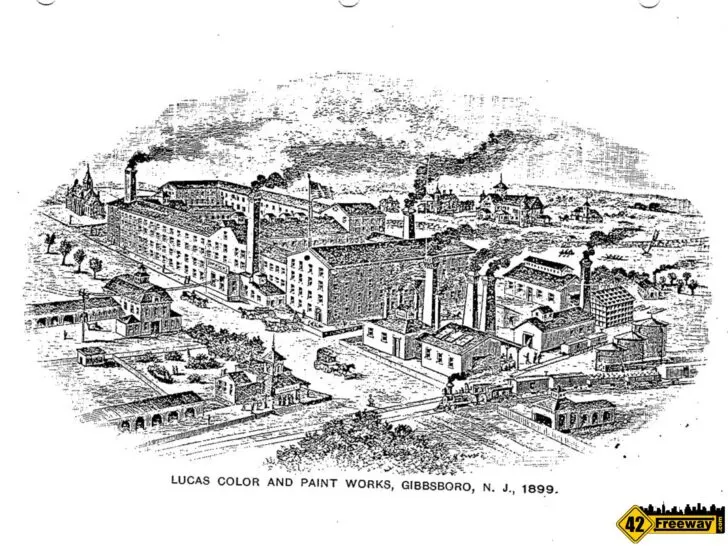
Unfortunately, generations ago industrial manufacturing operated basically unchecked, and over the years as Lucas Paints became an industry leader… additional manufacturing building were constructed on top of the contaminated soils.
And some of those original buildings where toxic ingredients where used in paint manufacturing, were then reused as workplaces into the modern era!
Other building demolitions have already been completed in the extended property, such as the single story “Corporate Center” office building which sat prominently at 6 East Clementon Ave.
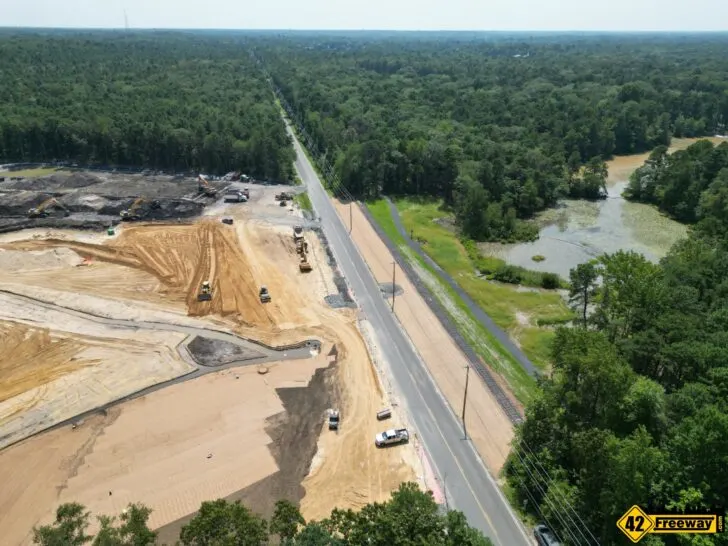
The second significant area being worked on this summer is on United States Ave. which it is called “the Burn Site”. The 11.5 acre piece of formerly wooded property, was previously used by the paint manufacturing company as a trash site, sludge material disposal area, as well as an area where paint waste and solvents were burned.
This Burn Site effort actually required the contractors to temporarily redirect the streams that exists on the property so that the soil underneath the natural streams could be removed and replaced… then the streams are returned back to their original place!
Sherwin Williams fully stopped operating at the site in 1978, and in 1981 it was sold to a private developer who converted the property and buildings into a corporate center and warehouse facility.
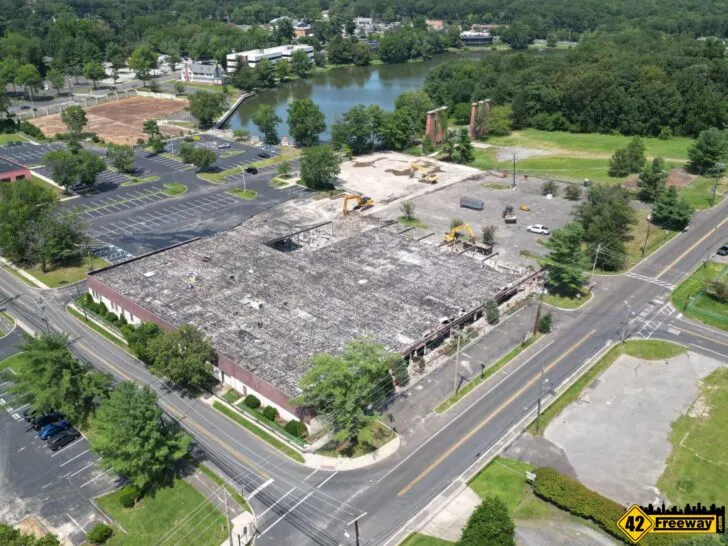
Today, this is an official United States Environmental Protection Agency Superfund site, added to the National Priorities List in 2008.
For cleanup activities the project and site is identified as “Sherwin Williams / Hilliard Creek”. Hilliard Creek is a waterway at the project site which carried pollutants, and also describes the larger floodplain area.
Today the remediation appears to be a well coordinated effort being completed by environmental contractors paid for by Sherman Williams, under the watchful eye of multiple government agencies including the United States Environmental Protection Agency and the NJDEP.
There is a public website specific to this project which presents the full scope of of the multiple efforts, what has been completed already, what is currently being worked on, and what remains. This site appears to be regularly updated.
The EPA also maintains an information site on the cleanup activities.

Additionally Gibbsboro’s Mayor Edward Campbell has been providing detailed regular updates at his Facebook page. (Facebook Link). It appears that the project managers are providing regular statuses to the Mayor, and he in turn is sharing them with residents via Facebook posts.
This is a multi-faceted effort to remediate and restore multiple manufacturing properties, contaminated residential properties, and impacted waterways.
According to the project website, two key remediation efforts are already completed; residential property remediation and the Route 561 dump site.
Keep Reading for more.
Warehouse Demolitions
This summer warehouse buildings at 2 and 4 Foster Ave. are being demolished to facilitate the remediation.
I visited the project site about two weeks ago, and at that time contractors were actively in the process of demolishing the corner building at 2 Foster Ave.
The adjacent 4 Foster Ave building which sat a little bit back off the road closer to the lake, was already demolished.
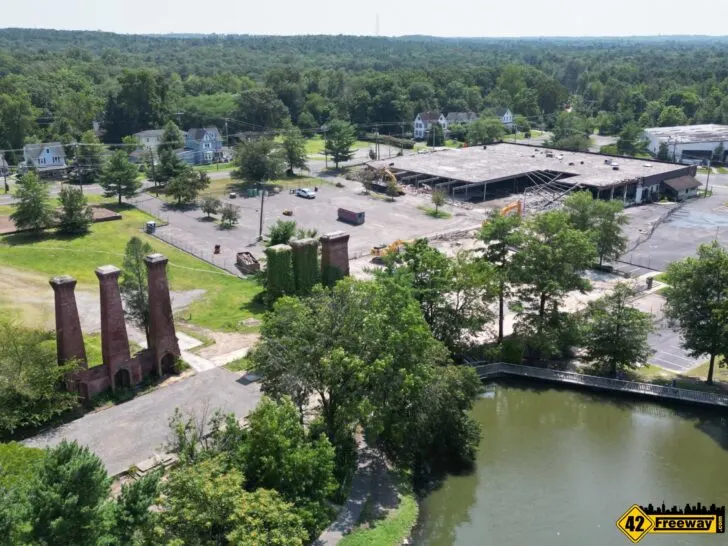
The 4 Foster Ave building was directly next to the iconic brick smokestacks which sit along the lake. Those smokestacks and the lake formed a backdrop to the former Lakeside Manor wedding and event facility.
It is said that the brick smokestacks will remain after the project is completed.
As mentioned the core reason for the demolition of these buildings is so that all of the contaminated soil of the properties, including underneath the buildings… can be removed and replaced with clean fill. Replanting of vegetation and restoration of the stream corridor associated wetlands will also take place.
For example, historical documents I found show that the corner where the 2 Foster Ave building is located was 100 years ago the location of the “Varnish Boiling House”
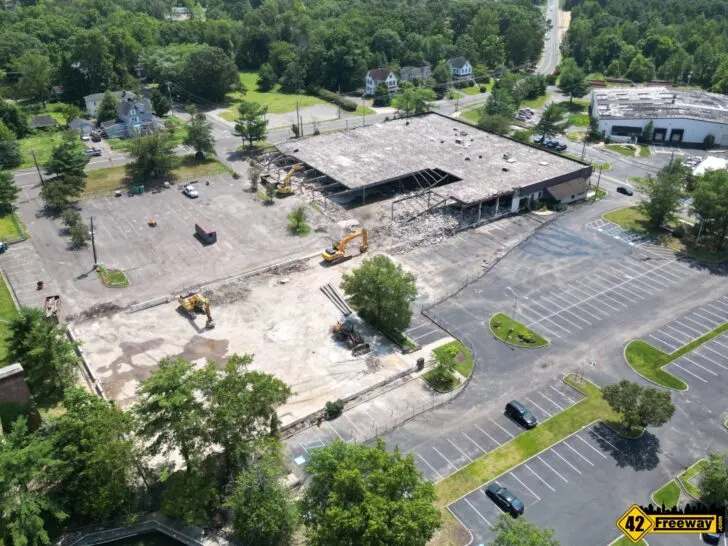
These two buildings are not the only ones that have been removed at the Paint Works complex. Previously the single story Paint Works Corporate Center building at 6 East Clementon Avenue was demolished.
Additionally a large building on the other end of the lake at the corner of Lakeview Drive and United States Ave. was also demolished in recent years, but I haven’t found a document that clearly describes it as being part of this effort.

Burn Site – United States Ave
The burn site is a wooded area on United States Ave., about 1000 feet South of the 2 Foster Ave. building.
Today that formerly wooded area is significantly cleared so that environmental contractors could remove the impacted soils and replace them with clean fill.

The contamination and then the remediation are so significant that two streams (White Sand Branch and Honey Run) were temporarily redirected to artificially created waterway paths, so that the soils underneath the streams natural paths could be removed and replaced. Contractors used a white plastic like substance to create the temporarily relocated stream bed!
Once that effort was completed the streams were redirect back to their natural paths.
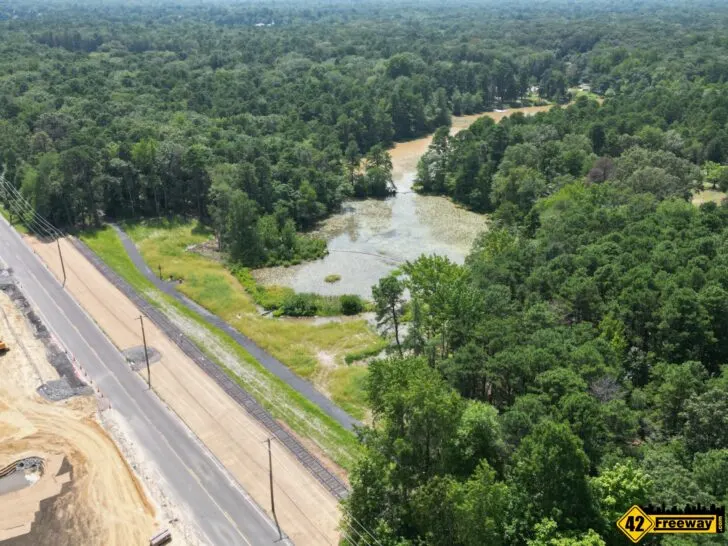
Additionally, portions of the historic Lucaston railroad tracks which run along United States Ave. were removed to also allow for soil remediation. Those tracks would be returned as part of the final restoration efforts
Once completed, replanting of vegetation as will take place as well as the restoration of streams on the properties.
Hilliard Creek Floodplain Waterbodies
The water bodies of this area are part of the Hilliards Creek floodplain, and includes Silver Lake, Bridgewood Lake and Kirkwood Lake.
The waterway impacts identified in documents stretch 1.5 miles into Kirkwood Lake! Most people likely don’t realize the lakes in Paint Works and Kirkwood are connected!
Over the course of the 125 year industrial history of the manufacturing plant, certain metals… primarily lead and arsenic, were transported downstream resulting in contamination within the floodplain and lakes.
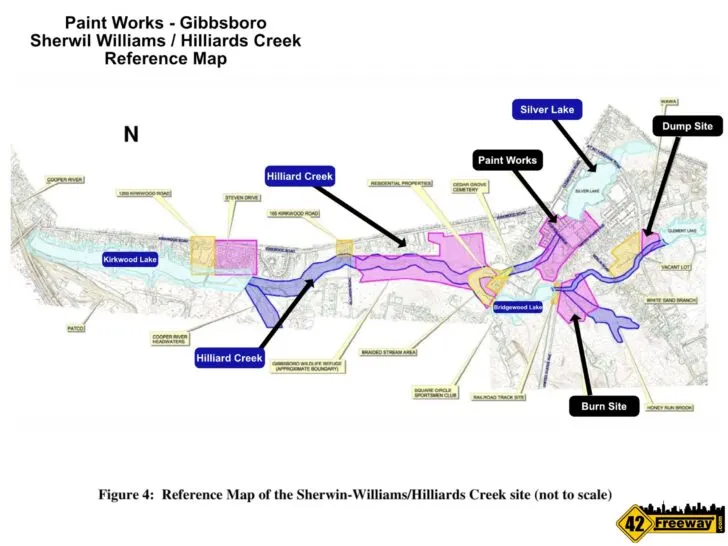
This contamination is also being addressed by the project’s efforts, and the consent decree authorizing Sherman Williams to begin the Waterbodies Unit work was finalized and entered in Federal Court on September 26th, 2022.
Pre-design investigation activities are being performed in a phased approach.
Basically, this is just the start of the waterbodies remediation effort.
Completed: Residential Remediation And Dump Site
When this core project started, the EPA put a priority on the cleanup of the residential properties.
In 2022 Sherwin Williams removed soil containing lead and arsenic from approximately 50 residential properties.
On October 20th 2022, the United States Environmental Protection Agency issued a “Certification of Completion” for the residential property remediations.
In a separate effort, a property on Route 561 (Lakeview) known as “The Dump Site” has also been remediated and restored.
Today the property is a small park called Generations Memorial Park. The park includes a walking path, benches, architectural walls and new vegetation has been planted.
It is situated next to the Plaza which is at the corner of Kresson Road and Rt 561/Lakeview.
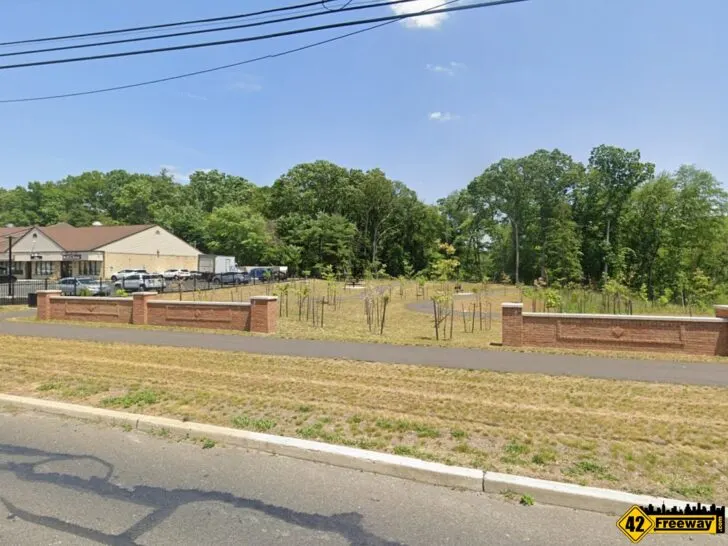
According to historical records this Route 561 parcel was used as a dump for waste materials from the operations of the paint and varnish manufacturing facility, from some time prior to 1935 until 1946.
it is adjacent to the White Sand Branch stream which leads from Clement Lake and runs alongside this property, travels in an underground culvert beneath Route 561 and eventually passes through the Burn Site property I previously mentioned… and ultimately empties into Bridgewood Lake.
The Generations Memorial Park appears to be a good example of the detail that Sherwin-Williams and contractors are putting into not only remediating the properties, but also restoring them.
Paintworks History: Sherwin-Williams and Lucas Paints
To get to this point of remediation the property was researched and litigated by a variety of government entities over several decades, including the United States Environmental Protection Agency, and then approved by the Federal Court System.
This means there’s a lot of documentation not only on the current project efforts, but also the history behind the property. For something of this scope all aspects of the contamination needed to be understood, and that’s where my summary information here comes from.
The project websites also provide a summary of the history and contamination points.
The Sherwin-Williams Hilliards Creek site is located in a residential and commercial area of Gibbsboro, New Jersey. The full sight encompasses approximately 60 acres.
To the north it is bordered by Silver Lake. Hilliard Creek flows through the former facility and connects with Bridgewood Lake and Kirkwood Lake.
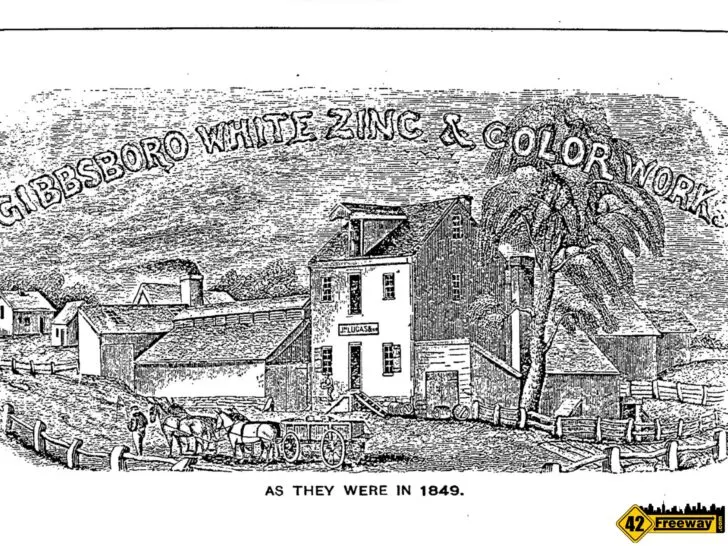
The property was originally developed around the turn of the 19th century as a sawmill, and then later it became a grain mill.
In 1851 the John Lucas company purchased the property and converted the existing mill into a paint and varnish manufacturing facility.
Yes this traces back 170+ years… and the full industrial operation of the property is 125 years!
And during those 125 years most of the chemical based manufacturing and disposal was done mostly unchecked by any government authorities or regulations… because there simply were not any agencies to do the checking!

Over the decades the plant was expanded to accommodate new processes such as grinding white lead and colors into oil paint.
At the site, the company developed and manufactured oil based paints, varnish, lacquer, dry colors and ready mixed linseed oil paints. Raw materials included lead oxide, zinc oxide, lead chromate, ferrous sulfate, sulfuric acid, linseed oil and other various solvents.
In 1930 the Lucas company merged with Sherwin-Williams. For many years the plant and products were still identified as Lucas Paints as during those years it was a leading name in paint products.
Contamination at the site was from general manufacturing processes, but also they did not practice safe disposal practices.
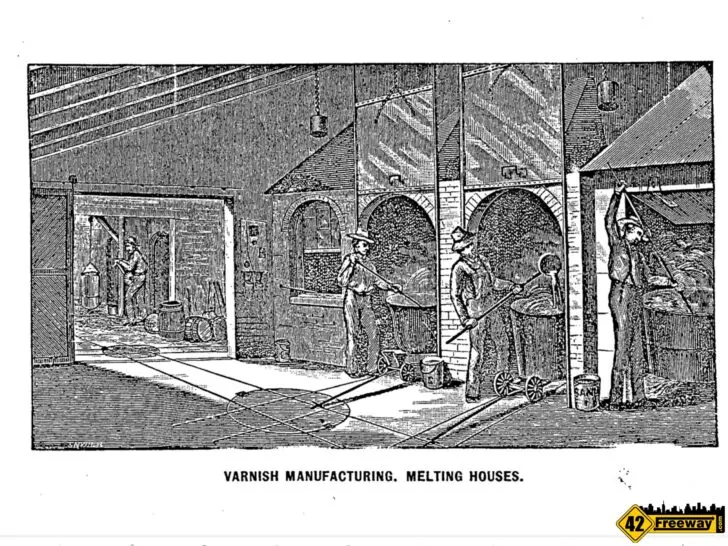
During the full lifetime of the paint manufacturing operations, waste generated from the plant was disposed of directly into Hilliard’s Creek, the Route 561 dump site, and the US Avenie Burn site.
Additionally, some areas of the extended property were dug out as pits, and with no protective lining in place… industrial wastewater and other solvent sludge were dumped into the earthen holes, making industrial waste lagoons.
Around the time of the plant closing, in 1976 Sherwin-Williams conducted a subsurface investigation that included the former lagoon areas.
Contaminated sludge material was encountered in the pond and surrounding areas, and in 1979 over 8,000 cubic yards of sludge material was removed.
At the time it seems this was thought to be the only area of contamination needing remediation from the 125 years of paint manufacturing operations.

in 1981 the property was sold to private developer Scarborough, who converted the property surrounding Silver Lake and some of its existing buildings into a Corporate Center.
So certain that the property was safe and clean, newspaper articles throughout the 80s never mentioned the risk of contamination from the property’s prior life, or raised a concern regarding it’s new use as a Corporate Center.
While I am old enough to consider the 1980s as a “modern era”, things were just different then. We didn’t wear seatbelts, you could smoke indoors anywhere including airplanes, and the drinking age was 18.
The general population still was not thinking “hmmm, maybe this could have some negative side effects”.
A 1981 Courier-Post article describes the excitement developer Bob Scarborough had for the project, and how many of the buildings used in the paint manufacturing process were to be repurposed in his new corporate center
the newest one was built in 1965. They’re steel and concrete, with lights and sprinkler systems already installed. Some of these larger buildings would be ideal for light manufacturing or warehouses. They could be used for office space too.
Developer Bob Scarborough in 1981 to the Courier-Post, regarding his plans for the Paint Works Corporate Center

Scarborough even commissioned a full history of the Lucas Paint Works company in Gibbsboro!
Four years later an article in the Philadelphia Inquirer provides a headline that calls the Paint Works Corporate Center “A Gibbsboro Blessing“!
That 1985 article describes the benefit the project had brought to the town by revitalizing the lake, cleaning up the manufacturing aspects of the site, and turning it into a positive for the town, ”We have less crime now”, was quoted by one town official.
It also describes the additional efforts that Scarborough added including a Colonial boardwalk around the lake, as well as a Victorian gazebo and a jogging track.
For the first time in 100 years the people of Gibbsboro were excited to have access to the lake.
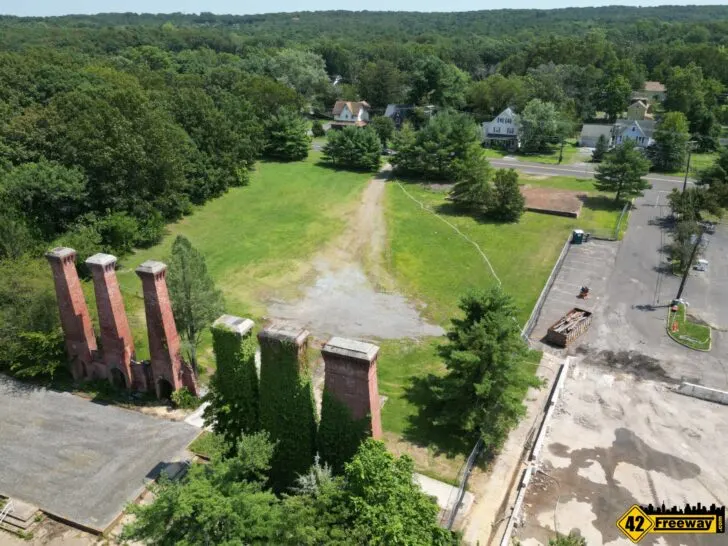
And in that 1985 article there is not one mention of potential contamination from the 125 years of paint manufacturing.
Which is interesting though because in 1983 (two years prior to that article), the presence of an oily substance was reported to the NJDEP, stating that a petroleum seep was emanating from the parking lot at the facility, flowing over land to a storm water catch basin in the parking lot, and then eventually discharging into the Hilliards Creek.
This led to investigations which indicated the presence of hazardous substances in the ground underlying the former facility and soil surrounding the structures of the plant.
These contaminants included benzene, toluene and others.
Through the 1990s officials worked with Sherwin-Williams to do additional testing and remediation at the property. This included analysis of soil, groundwater and sediment samples which found lead and organic contamination.
In 1998 during additional testing in the Hilliards Creek area, a sample taken adjacent to a trail in the Gibbsboro Nature Preserve was found to contain 221,900 milligrams of lead per kilogram… which is significantly greater than the EPA max amount allowed for soil contamination in “non-play” areas.
Over the course of the years of analysis and research the property became more aware to the US Government’s Environmental Protection Agency, and in 2008 it was added to the National Priorities List.
This elevated focus of the EPA as well as continued guidance, pressure and lawsuits from the NJDEP… is what finally has brought us to the point where the Gibbsboro property is being properly remediated and restored.
I’ll have more on the progress of the project, as well as any future plans for the property… in later article updates.
Links
Paint Works – Sherwin Williams/Hilliards Creek Remediation
- Remediation Project Website
- Mayor Edward Campbell Facebook Updates (Facebook)
- EPA Superfund Cleanup

